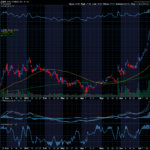The Black-Scholes Model is a mathematical formula used to calculate the theoretical value of European-style options, which are options that can only be exercised on the expiration date. The model was developed by Fischer Black and Myron Scholes in 1973 and has become one of the most widely used tools in options pricing and risk management.
The Black-Scholes Model takes into account several factors such as the current underlying stock price, the option’s strike price, the time remaining until expiration, the risk-free interest rate, and the implied volatility of the underlying asset. Using these inputs, the model provides an estimate of the option’s fair value, or the price that the option should be worth based on the current market conditions.
For example, let’s say that Company XYZ is currently trading at $100 per share, and you are interested in buying a call option with a strike price of $110 that expires in six months. You can use the Black-Scholes Model to estimate the fair value of the option based on the current market conditions, such as the implied volatility of Company XYZ’s stock. This can help you determine whether the option is overpriced or underpriced compared to the theoretical value.
While the Black-Scholes Model is widely used in the financial industry, it has some limitations and assumptions. It assumes that the underlying asset’s price follows a random walk pattern, and that there are no transaction costs, dividends, or restrictions on trading. These assumptions may not always hold true in the real world, and traders should use the model as a tool to supplement their own analysis and judgment.





Recent Comments